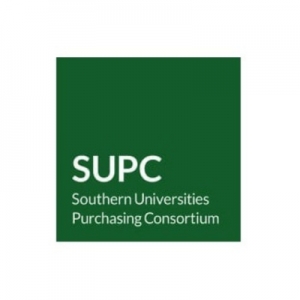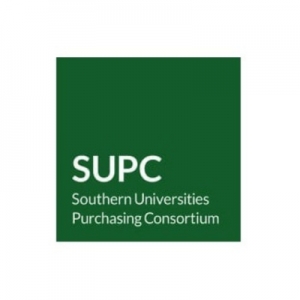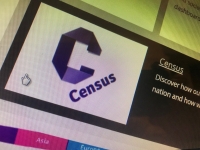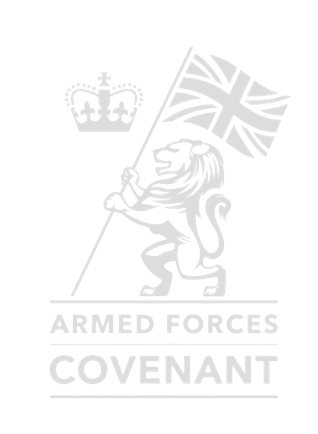Malikshaw Interim
Digital Clinicians: The New Frontier in Healthcare Talent

Digital Clinicians: The New Frontier in Healthcare Talent
Across the healthcare system, digital transformation is no longer a future ambition. It is an immediate operational and strategic necessity. From electronic patient records and virtual wards to population health analytics and integrated care systems, the sector is undergoing rapid change. What is becoming increasingly clear is that technology alone does not drive successful transformation — people do.
A critical enabler of this shift is the emergence of the digital clinician. These are hybrid professionals who combine clinical expertise with a strong understanding of digital tools, systems, and data. Whether they are nurses involved in user experience design, GPs contributing to digital strategy, or pharmacists embedded in electronic prescribing rollouts, digital clinicians bring a unique and valuable perspective. They understand clinical workflows and patient needs while also navigating technical design, system integration, and data governance.
This blend of experience is becoming increasingly sought after by NHS Trusts, ICBs and health tech delivery teams. Many programmes struggle not because of the technology itself, but because of a disconnect between those building systems and those using them. Digital clinicians help bridge that gap. They ensure that frontline priorities are considered during implementation, that clinical safety is maintained, and that adoption is not an afterthought.
Yet while demand is growing, supply remains limited. These roles are still emerging, often without clear pathways or consistent role definitions. Many organisations are unclear where to source this talent or how to identify individuals with the right balance of clinical credibility and digital capability.
At Malikshaw, we are seeing increasing demand from healthcare clients for interim professionals who understand both domains. Whether it’s a clinical informatics lead, a CCIO, a digital nurse, or a clinical safety officer, these individuals are critical to building services that are safe, usable, and future-proofed. Because of our work across digital, data, transformation, and public service leadership, we are well positioned to identify and place these hybrid professionals — often from adjacent sectors or as returners into the NHS.
As digital investment continues, the ability to attract and deploy these professionals will be a competitive differentiator. Healthcare organisations cannot afford to rely solely on traditional structures or assume that digital adoption will happen organically. The digital clinician is not a niche role but a strategic asset. One that healthcare clients should be actively investing in, supporting, and embedding across programmes.
If your organisation is looking to deliver complex change that is both clinically grounded and digitally enabled, we can help you find the people who can make it happen.
To learn more about how we support healthcare clients with specialist interim and transformation talent, contact our team.
Malikshaw Appointed to SUPC Procurement Framework
We are pleased to announce that Malikshaw has been appointed as an approved supplier on the Southern Universities Purchasing Consortium (SUPC) framework. This appointment reflects our strong track record in delivering high-quality, value-driven services to the public and education sectors. Being part of this framework complements our existing positions on other national and regional frameworks, reinforcing our commitment to supporting clients through compliant, flexible procurement routes.
Malikshaw Named Approved Supplier for Northamptonshire OPFCC
Malikshaw is proud to have been selected as an approved supplier to the Office of the Police, Fire and Crime Commissioner (OPFCC) for Northamptonshire. This recognition highlights our continued dedication to delivering professional, responsive services in the public safety and community support sectors. Our appointment aligns with and strengthens our growing portfolio of work with local and national public bodies.
Malikshaw's Commitment to Net Zero 2025
Carbon Reduction Plan
Commitment to achieving Net Zero
EVISA SOLUTIONS LTD is committed to achieving Net Zero emissions by 2030.
Baseline Emissions Footprint
Baseline emissions are a record of the greenhouse gases that have been produced in the past and were produced prior to the introduction of any strategies to reduce emissions. Baseline emissions are the reference point against which emissions reduction can be measured.
|
Baseline Year: 2022 |
|
|
Additional Details relating to the Baseline Emissions calculations. |
|
|
2022 is the Baseline for reporting purposes. |
|
|
Baseline year emissions: |
|
|
EMISSIONS |
TOTAL (tCO2e) |
|
Scope 1 |
0 |
|
Scope 2 |
55.236 |
|
Scope 3 (Included Sources) |
4.195 |
|
Total Emissions |
59.431 |
Current Emissions Reporting
|
Reporting Year: 2024 |
|
|
EMISSIONS |
TOTAL (tCO2e) |
|
Scope 1 |
0 |
|
Scope 2 |
38,731 |
|
Scope 3 (Included Sources) |
2,488 |
|
Total Emissions |
41,219 |
Emissions reduction targets
In order to continue our progress to achieving Net Zero, we have adopted the following carbon reduction targets. Using these projects we project that carbon emissions will decrease over the next five years to 39 tCO2e by 2027. This is a reduction of 34.55%
Carbon Reduction Projects
Completed Carbon Reduction Initiatives
The following environmental management measures and carbon reduction projects are being implemented to achieve this plan. These include fully electric company car fleet, changes in policy initiating a reduction in company travel, increased work from home and office energy efficiency measures regarding heating and lighting. The carbon emission reduction to be achieved by these schemes equate to 5 tCO2e, an 8.5% reduction against the 2022 baseline and the measures will be in effect when performing the contract
Declaration and Sign Off
This Carbon Reduction Plan has been completed in accordance with PPN 06/21 and associated guidance and reporting standard for Carbon Reduction Plans.
Emissions have been reported and recorded in accordance with the published reporting standard for Carbon Reduction Plans and the GHG Reporting Protocol corporate standard and uses the appropriate Government emission conversion factors for greenhouse gas company reporting.
Scope 1 and Scope 2 emissions have been reported in accordance with SECR requirements, and the required subset of Scope 3 emissions have been reported in accordance with the published reporting standard for Carbon Reduction Plans and the Corporate Value Chain (Scope 3) Standard.
This Carbon Reduction Plan has been reviewed and signed off by the board of directors (or equivalent management body).
Signed on behalf of the Supplier:
Date: 1st June 2025
Robert Shaw
Partner | Public Sector
SUPC
Southern Universities Procurement Consortium. A leading provider to the education sector of high-quality, innovative procurement services.
From Pause to Play: Working Out Your Next Move

It’s common to reach a point in your career where things feel like they’ve slowed down. The role you once enjoyed no longer brings the same energy. You’re not learning much. The motivation that once drove you has faded.
We hear this often from people in our network. Experienced professionals who know they’re capable of more but aren’t sure what their next step should be.
If that sounds familiar, it may be time to re-evaluate what you want from your work and how to move toward it.
Start by asking yourself a few honest questions. What parts of your job do you still enjoy? What drains your energy? What skills do you wish you were using more often? These questions can reveal patterns and help you reconnect with what matters to you professionally.
Talking it through with someone can help too. Whether it’s a mentor, a former colleague or someone in a role you admire, a conversation can offer a new perspective. If you’re not sure where to begin, our team at Malikshaw is always open to a conversation. Sometimes just hearing what’s happening in the market, whether in interim or permanent roles, can unlock new ideas.
You don’t need to overhaul everything at once. A small shift can help you regain momentum. That could be a short-term project, a secondment, or a new challenge within your current organisation. For many people, interim roles provide the flexibility to explore something new without making a long-term commitment straight away.
Interim work can also help you:
- Step into transformation projects where your experience is highly valued
- Build confidence by delivering quick wins in new environments
- Expand your network across different organisations
- Reignite your interest in work that has a clear purpose and outcome
For some, interim becomes a long-term way of working. For others, it’s a bridge to a more permanent move. Either way, it gives you space to move forward without waiting for the perfect role to appear.
Investing in yourself is key too. Whether that’s a new certification, staying informed on sector trends, or simply reconnecting with peers, it keeps your thinking fresh and your options open.
And of course, sometimes a deeper change is needed. If your current environment no longer supports your growth or values, then exploring new opportunities, interim or permanent, might be the right move.
At Malikshaw, we support professionals at all stages of their careers, helping them step into roles that make a real difference. Many of the roles we place are at the heart of public sector transformation, where experience, perspective and resilience matter.
So if your career feels like it’s paused, it may simply be preparing you to press play again. This time on something that better reflects your skills, goals and values.
We’re here to help you figure out what that might look like.
Sign up to the Malikshaw Interim Bulletin for updates and insights
Subscribe here
Want to talk through your next move, interim or permanent?
Get in touch with us
Malikshaw Appointed as Approved Supplier to Cirrus Purchasing
Malikshaw Interim and Executive is pleased to announce its appointment as an approved supplier to Cirrus Purchasing, further strengthening our presence in the public procurement and strategic resourcing space.
This partnership reflects Malikshaw’s proven track record in delivering high-calibre interim and executive talent to organisations across the public and regulated sectors. As a trusted supplier to Cirrus Purchasing, Malikshaw will support their work with public sector clients by providing leadership and expertise that drive effective procurement and operational outcomes.
“Being appointed as a supplier to Cirrus Purchasing is a proud moment for us,” said Rob Shaw, CEO of Malikshaw Interim and Executive. “We look forward to working closely with Cirrus and their partners to deliver exceptional talent solutions that make a measurable impact.”
Legacy Systems: The Silent Budget Killer

Legacy systems rarely feature in project headlines, but anyone who’s led a transformation will know their impact is real — and far-reaching.
They sit quietly in the background, rarely discussed in early planning meetings, but slowly shaping what is and isn’t possible. They increase delivery risk, add costs that weren’t budgeted, and often leave teams trying to build modern services on unstable ground.
If you’re a hiring manager, transformation lead, or programme sponsor, this probably isn’t news. You’ve likely seen the signs before. Projects running slower than expected. More stakeholder meetings to explain technical blockers. Highly skilled teams spending more time working around old systems than delivering innovation.
These systems are often seen as too costly to replace, too embedded to disrupt, and too risky to touch without a major business case. So they remain, year after year, draining resources and patience.
But the real issue isn’t just technical. It’s human.
The presence of legacy systems changes the kind of people you need to deliver successfully. It’s no longer enough to find someone who’s great at solution design or agile delivery. You need people who understand the constraints, who know how to make progress in less-than-ideal conditions, and who can bring calm, clarity and direction when the systems don’t cooperate.
That’s not always an easy brief to write — let alone fill.
Some organisations try to tackle this by doubling down on specialist technical hires, but skills alone don’t solve the problem. What’s needed is a more nuanced approach to recruitment. One that considers not just what someone knows, but how they think and how they operate under pressure.
The most effective programmes we’ve seen take a strategic approach to hiring, especially around legacy. That means:
- Blending legacy expertise with forward-looking transformation talent
- Bringing in analysts and architects who can act as translators between old and new
- Hiring delivery leads who know how to plan realistically and manage stakeholder expectations
- Finding candidates with both technical credibility and interpersonal skills
- Building resilience into teams by thinking ahead about succession and support
This is where a good recruitment partner earns their place. Not just by filling gaps quickly, but by helping you shape the roles in the first place. By understanding the challenges behind the job title and offering practical, experience-based advice on how to attract the right people.
At Malikshaw, we’ve worked with public sector teams across local government, health, housing and education. We’ve seen how legacy systems frustrate even the most well-resourced programmes — and how the right interim or project hire can help unblock progress.
We don’t claim to have all the answers. But we do understand the real-world pressures hiring managers are under. And we know how to find people who thrive in that space.
So if you’re facing a digital delivery challenge and legacy systems are part of the equation, let’s talk. Whether you need an interim to steady the ship or a team to deliver real change, we’ll help you find the right people to keep things moving.
Talk to Malikshaw. Let’s see how we can help.
Cirrus
Inside Public Sector Recruitment : From Tender to Talent

Hiring in the public sector comes with its own unique challenges. Between frameworks, compliance requirements, and multiple layers of governance, getting the right person into the right role isn’t always straightforward.
That’s why the difference between a good recruitment agency and a great one is rarely about ticking procedural boxes. It’s about how well they understand the system, how quickly they can move within it, and how effectively they can align recruitment with real-world outcomes.
Here’s a look at what that difference really looks like across each stage of the process.
Stage 1: Getting onto Frameworks
Frameworks are essential to public sector hiring. They allow organisations to work with pre-approved suppliers who meet defined standards, without needing to run a full procurement each time. But getting onto a framework is no small task. It requires financial transparency, evidence of service delivery, and increasingly, clear commitments to social value, diversity, and sustainability.
What sets great agencies apart here is the depth of preparation. They don’t just meet the requirements, they build their delivery models around them — ensuring the standards are more than just compliance, but embedded into every part of their recruitment process.
Stage 2: Receiving Role Briefs
Once a supplier is on a framework, they begin to receive role requests directly — often before roles go to market. At this stage, it's not just about what's written in the brief. It's about reading between the lines and understanding the transformation behind the role title.
Great agencies know how to ask the right questions. They understand the difference between needing someone to "lead" and someone to "fix." They spot where a role requires deep sector knowledge, or where a fresh external perspective could make all the difference. And when urgency hits, they’re ready — not scrambling.
Stage 3: Sourcing the Right Talent
Public sector roles often demand a blend of rare skills, relevant experience, and the ability to operate in complex, highly structured environments. Some require clearance, others need niche technical capabilities, and most come with tight budget parameters.
The agencies that consistently deliver in this space do more than just search a database. They cultivate trusted talent pools over time. They stay close to their networks. And they headhunt with precision when the brief calls for it. Most importantly, they understand that success isn’t just about a CV match — it’s about cultural fit, resilience, and the ability to navigate public sector challenges.
Stage 4: Compliance and Vetting
This is often where momentum is lost. Vetting processes in the public sector can be extensive, covering DBS, BPSS, SC or DV clearance, references, and qualification checks. When managed poorly, these steps slow everything down.
What makes a difference is anticipation. Great agencies don’t wait until the offer stage to begin compliance. They run processes in parallel, gather documentation early, and keep all parties informed. The result is a smoother, faster route to onboarding — without cutting corners.
Stage 5: Placement and Onboarding
Getting someone into post isn't just about finalising paperwork. There are stakeholders to coordinate, expectations to align, and organisational cultures to prepare for.
This is where recruitment becomes more than just logistics. The best agencies act as partners — guiding candidates through onboarding, managing communication between teams, and ensuring that when someone starts, they’re ready to deliver from day one.
Bringing It All Together
At a glance, the process seems linear: Tender → Role Request → Sourcing → Compliance → Placement. But in practice, it’s anything but simple.
The agencies that stand out are the ones that bring agility, experience, and insight to every stage. They’re responsive without being reactive. They understand the system, but never lose sight of the people within it. And they focus on outcomes, not just activity.
That’s the approach Malikshaw brings to public sector recruitment. After two decades supporting transformation across central and local government, health, justice, and beyond, we’ve learned how to make the frameworks work — not just for hiring managers, but for the people delivering change on the ground.
If you're looking for a partner who understands how to turn process into progress, we’d be happy to talk.


